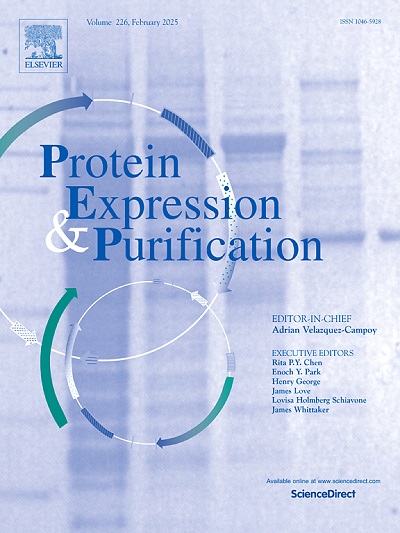Development of magnetic particle-based chemiluminescence immunoassay for quantitative determination of hepatitis C virus core antigen
IF 1.2
4区 生物学
Q4 BIOCHEMICAL RESEARCH METHODS
引用次数: 0
Abstract
Objectives
Development of an immunoassay for quantitation detecting the highly conserved hepatitis C core antigen (HCVcAg).
Methods
Anti-HCVcAg monoclonal antibodies (mAbs) were developed and evaluated using enzyme-linked immunosorbent assay (ELISA), and the chemiluminescence enzyme immunoassay (CLEIA) was also proposed. The serum HCVcAg was measured to evaluate and analyze the performance of CLEIA and analysis of the mAb pair was evaluated by sequencing of the antibody variable region.
Results
The prokaryotically expressed HCVcAg was purifed and three HCVcAg mAbs against HCVcAg with excellent detection performance were obtained after immunizing BALB/c mice. MAb 4D11 and 28B10 were selected as respective capture and detection antibodies for HCVcAg measurement by CLEIA (detection range, 0.1–256 μg/L). The results for CLEIA and fluorescent PCR used in hospitals demonstrated excellent consistency (K = 0.801, P < 0.01). The variable region genes of the heavy chain (VH) and light chain (VL) for the mAb pair were successfully sequenced.
Conclusion
The developed mAbs and CLEIA are expected to become a rapid and economical clinical diagnostic tool for HCVcAg detection.
磁颗粒化学发光免疫法定量测定丙型肝炎病毒核心抗原的建立
目的建立一种定量检测高度保守的丙型肝炎核心抗原(HCVcAg)的免疫分析法。方法制备抗hcvcag单克隆抗体,并采用酶联免疫吸附法(ELISA)和化学发光酶免疫分析法(CLEIA)进行鉴定。测定血清HCVcAg以评价和分析CLEIA的性能,并通过抗体可变区测序来评价单抗对的分析。结果纯化了原核表达的HCVcAg,免疫BALB/c小鼠后获得了3株检测性能良好的HCVcAg单克隆抗体。选择MAb 4D11和28B10分别作为CLEIA法测定HCVcAg的捕获和检测抗体(检测范围0.1 ~ 256 μg/L)。医院应用的CLEIA与荧光PCR结果具有很好的一致性(K = 0.801, P <;0.01)。成功测序了单抗对重链和轻链的可变区基因。结论所建立的单克隆抗体和CLEIA有望成为一种快速、经济的HCVcAg临床诊断工具。
本文章由计算机程序翻译,如有差异,请以英文原文为准。
求助全文
约1分钟内获得全文
求助全文
来源期刊

Protein expression and purification
生物-生化研究方法
CiteScore
3.70
自引率
6.20%
发文量
120
审稿时长
32 days
期刊介绍:
Protein Expression and Purification is an international journal providing a forum for the dissemination of new information on protein expression, extraction, purification, characterization, and/or applications using conventional biochemical and/or modern molecular biological approaches and methods, which are of broad interest to the field. The journal does not typically publish repetitive examples of protein expression and purification involving standard, well-established, methods. However, exceptions might include studies on important and/or difficult to express and/or purify proteins and/or studies that include extensive protein characterization, which provide new, previously unpublished information.
 求助内容:
求助内容: 应助结果提醒方式:
应助结果提醒方式:


